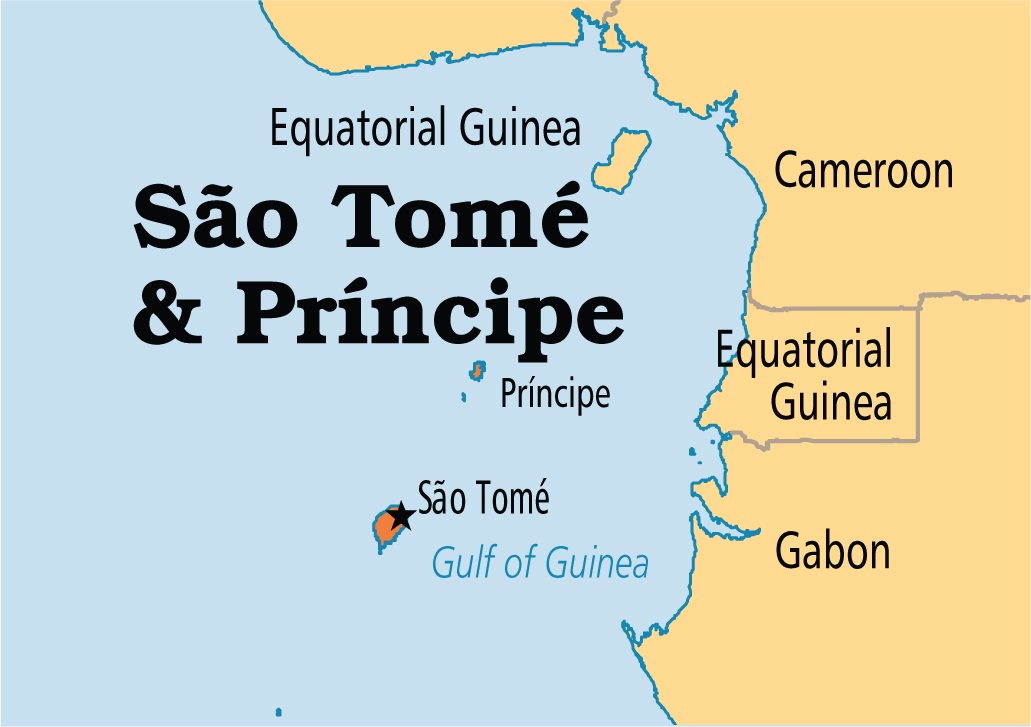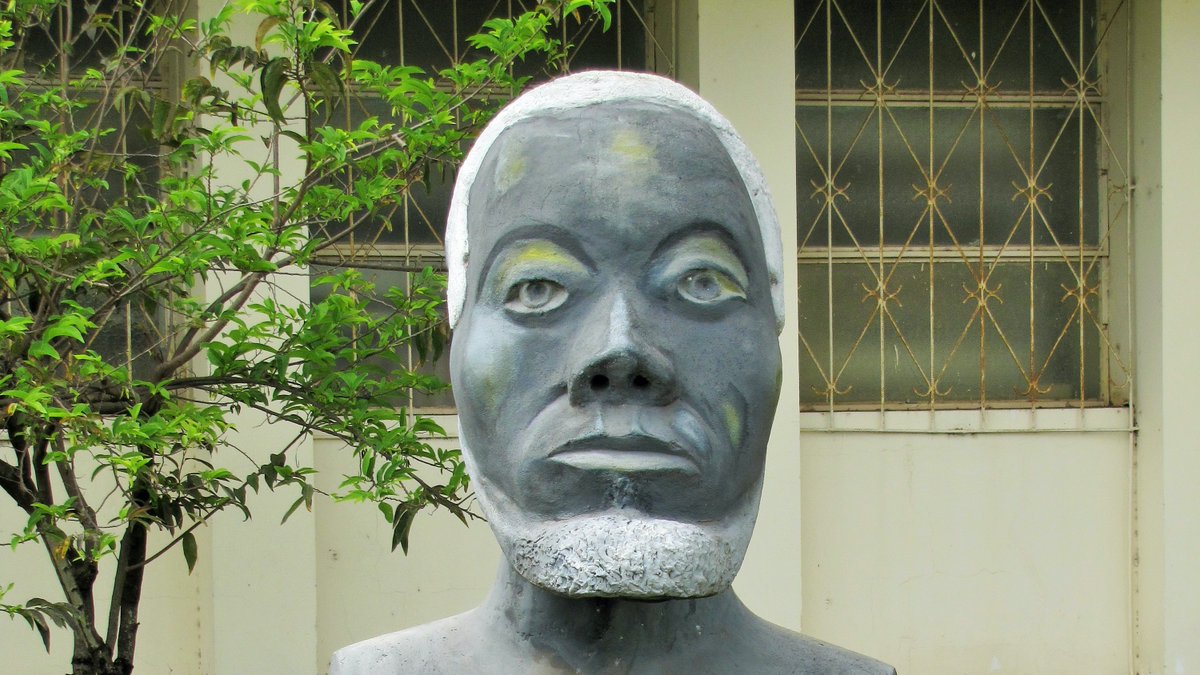Lots of talk about rebellions in Atlantic history. Here's one not many people know about.
Today is the anniversary of Amador’s Revolt on São Tomé island. A long #twitterstorian thread 1/
Today is the anniversary of Amador’s Revolt on São Tomé island. A long #twitterstorian thread 1/
On July 9th, 1595, Amador, a Creole man born into slavery led a rebellion with two friends named Lázaro and Domingues Preto. Amador and his rebels entered the parish church in a town called Trindade and killed a few white men at Mass.
2/
2/
After the initial executions, Amador filled the chapel’s chalice with palm wine, a liquor made from local materials and not the foreign European wine, and took a drink while the priest watched.
He knew how to make a scene.
He knew how to make a scene.
Then Amador ordered the priest to be killed. (A rebel secretly spared him.) Amador and his crew left the church and headed to a nearby plantation owned by Pedro Álves Freire. They killed him but let his wife and her mother go free.
Amador’s rebels burned the Freire plantation down with his corpse in it.
5/
5/
These killings on July 9th were savvy political executions. Power on São Tomé revolved among 3 groups: Plantation owners, Catholic clergy, and colonial administration. In 1595 power brokers in the three groups were feuding, which was normal.
6/
6/
In this case the Bishop had excommunicated the administration and a bunch of planters. The planters and the city administrators threatened the bishop who fled to Portugal. Amador timed his attacks during the disarray.
7/
7/
People almost immediately began emancipating themselves and joining Amador’s cause. Two days later, on July 11th, 15 more sugar plantations burned. The same day, the governor raised a militia to confront Amador and the rebels. But a spy tipped him off.
8/
8/
Instead, the rebels attacked São Tomé city. They killed three people and made off with a bunch of clothes. Over the next couple of days 2,000 people joined Amador’s cause. Most were people who fled bondage on plantations but some were from the island's maroon communities.
9/
9/
By July 14th they had burned another 30 plantations. That’s a total of 46 plantations burned in 3 days. Why were there so many plantations on São Tomé?
10/
10/
São Tomé is a small volcanic island located just miles north of the equator. It’s About 25 miles by 35 miles in a teardrop shape.
11/
11/
Locals say you can stick a pop-sickle stick in the ground and a tree will grow. In the 1550s and 1560s São Tomé was the leading sugar producer in the world. That’s what fertile soil and a long rainy season will do for you.
12/
12/
The quality of the sugar was low because the humidity wouldn't allow the the sugar process as fully as in drier climates like Madeira. São Tomé sugar was, basically, brown sugar and it didn't sell for as much in Europe as white sugar. But, the planters could make tons of it.
13/
13/
By the 1590s production was declining for all sorts of reasons (pests, slave rebellions, poor quality) but these planters were still very productive. That meant a lot of enslaved laborers and a lot of plantations.
14/
14/
By July 14th the planters, clergy, and administrators were making peace with each other to make war with Amador. But by then Amador had declared himself King of the island with authority to free all enslaved people.
15/
15/
On July 14th Amador marched to São Tomé city declaring he’d kill any whites (administrator) or mulattos (plantation family) he saw. This time the settler army was prepared. They repelled the attacks. It’s unclear how many people died. Probably not many.
16/
16/
On July 23rd the settlers went on the offensive and surprised a group of rebels. A friend of Amador’s named Count Silvestre was killed. An enraged Amador declared war.
17/
17/
On July 28th Amador’s rebels invaded São Tomé city. By then half of all enslaved people had emancipated themselves to his army. Nearly 5,000 in total. And, they had burned at least 60 sugar mills, possibly as many as 75.
18/
18/
This is where narrating the story gets tricky. The earliest sources say one thing but later sources and stories islanders tell about Amador on the island say another. I'm going with the early sources but I recognize islanders have more right to this story than I do.
19/
19/
The 4-hour battle on the 28th ended with Amador’s forces fleeing and having lost over 200 fighters. Lázaro was wounded and another leader had been captured and hung. Amador’s mystique fell apart that day.
20/
20/
Many of the women and girls left Amador’s camp later that day after being confronted by a unit from the settler militia. The next day most of the men headed back to the city to ask forgiveness from the authorities. Alone and powerless, Amador fled inland.
21/
21/
He hid out among maroon communities but was betrayed and captured a couple of weeks later. On August 14th he was hung and quartered. His rebellion was over, but the consequences weren't.
22/
22/
Amador isn't solely responsible for ending the sugar economy on the island, but he did crash it and it never recovered the production of the middle 1500s. Most of the rich planters got scared and fled to Brazil.
Today he’s a national hero and anti-colonial icon on São Tomé.
(This is an image of a statue - via Wikipedia - that sits in front of the national archives where I did my diss research.)
(This is an image of a statue - via Wikipedia - that sits in front of the national archives where I did my diss research.)
Epilogue: There are a lot of myths about Amador. Maybe I'll do other threads on those I'll just wrap up the one I already mentioned. 19th Portuguese sources and modern day islanders say Amador's army won the battle on July 28th...
24/
24/
And that Amador ruled the island as king of a colony of freed slaves until January of 1596 when the settlers retook the city and executed him.
end/
end/

 Read on Twitter
Read on Twitter



